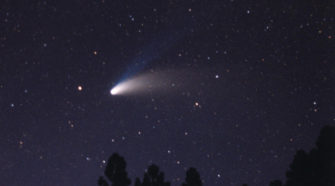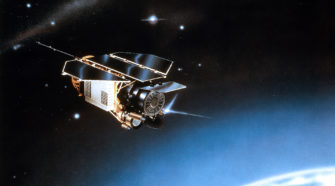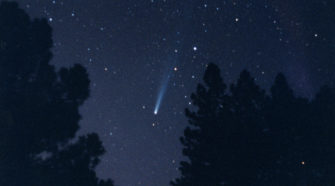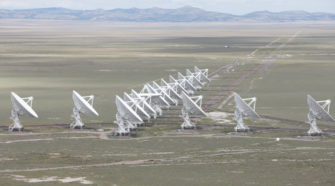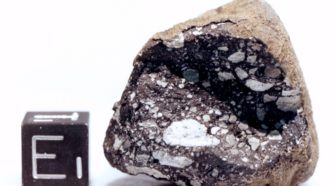Ice and Stone
Special Topic: Ancient Ideas about Comets
To our ancestors of several centuries to a few millennia ago, the nighttime sky was, to some extent anyway, a generally predictable place. The stars remained “fixed” relative to each other in the patterns that we call constellations, each culture “seeing” whatever constellations that they considered relevant. While these shifted east-to-west over the course of …
Ice and Stone 2020 Companion Glossary
We hope you are enjoying reading the weekly Ice and Stone 2020 content from astronomer Alan Hale. For those who might not be as versed in astronomy terms, he’s put together this glossary of technical terms, many of which are regularly used within the weekly educational content. A Absolute magnitude: for a comet or asteroid, …
This Week in History: March 22-28
MARCH 22, 2016: The tiny Comet PANSTARRS P/2016 BA14 passes just 0.024 AU from Earth, the closest known cometary approach to Earth thus far in the 21st Century and the third-closest known cometary approach to Earth in history. Despite its closeness, it was never brighter than 13th magnitude. This and other close comet approaches to …
Comet of the Week: Hyakutake C/1996 B2
Perihelion: 1996 May 1.40, q = 0.230 AU Following the discovery of Comet Hale-Bopp in mid-1995, the entire world was awaiting its expected good show in 1997. But while we were waiting, another comet came by and provided another stunning show. This object was discovered on January 30, 1996 by a Japanese amateur astronomer, Yuji …
Special Topic: “Small Bodies” and the Electromagnetic Spectrum
The “visible” light that our eyes see, and that most of our telescopes detect, is only a very small part of the electromagnetic spectrum. The full EM spectrum encompasses everything from the long-wavelength, low-frequency, low-energy radio waves, on down through infrared, then “visible” or optical light, and then into the shorter-wavelength, higher-frequency, and higher-energy ultraviolet, …
This Week in History: March 15-21
MARCH 15, 2020: Comet ATLAS C/2019 Y1 will pass through perihelion at a heliocentric distance of 0.838 AU. This is the fourth known member of a “group” of comets, the first of which appeared in 1988; this, and other comet “groups,” are discussed in a future “Special Topics” presentation. Comet ATLAS has become bright enough …


